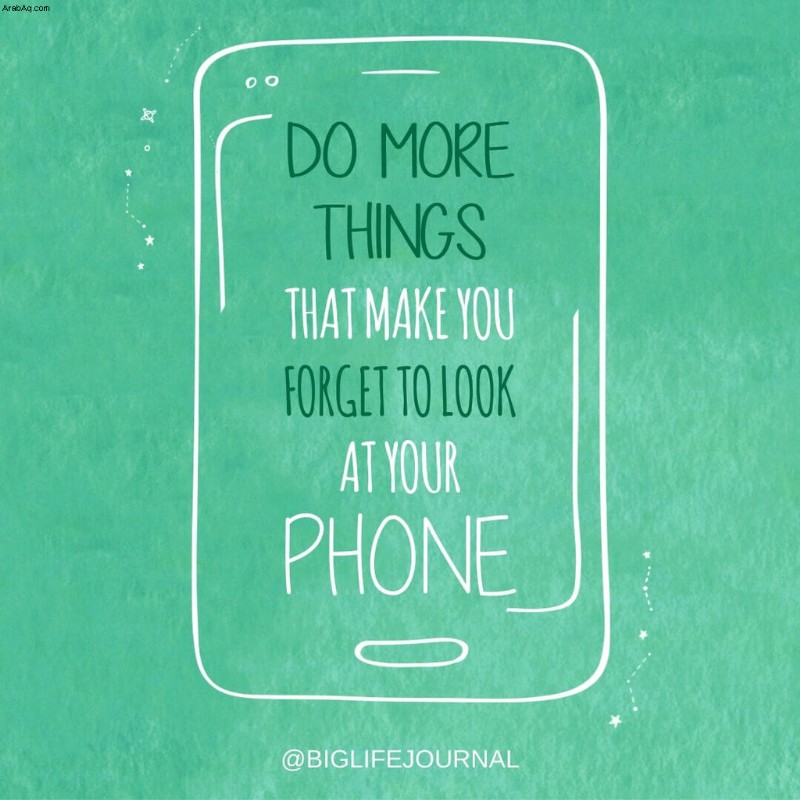خلال جائحة COVID-19 ، أصبح وقت الشاشات للأطفال والآباء أكثر تعقيدًا. تطلبت طلبات البقاء في المنزل دخول الحياة الاجتماعية عبر الإنترنت ، وقد أضاف التعلم عن بعد ساعات من وقت الشاشة لآلاف الطلاب ، وحتى المدارس التي فتحت شخصيًا تتطلب عملاً عبر الإنترنت أكثر من أي وقت مضى. في المستقبل المنظور ، سيضطر المراهقون والمراهقون إلى قضاء ساعات طويلة على الشاشات كل يوم ، ومع ذلك تأتي تحديات فريدة لتطورهم.
يمكن أن يحد وقت النظر أمام الشاشة من النمو العاطفي
يرتبط الاستخدام المعتدل إلى الشاشات المرتفعة بانخفاض الفضول والتنظيم العاطفي لدى المراهقين. عندما يصعب حل المشكلات ، سواء كانت فكرية أو عاطفية ، تقدم الشاشات طريقة لتجنبها. على سبيل المثال ، من الأسهل على Google الإجابة على سؤال علمي صعب أكثر من تكوين فرضية واختبارها وتقييمها ، وبالتالي يتضاءل الفضول. من الأسهل بكثير امتصاص الإعجابات على Instagram بدلاً من الجلوس مع مشاعر الحزن ، لذلك يكافح الأطفال للتحكم في عواطفهم.
تحد هذه الطرق المختصرة من فرص العمل من خلال الشدائد ، وهو العنصر الحاسم في تعزيز عقلية النمو واحترام الذات الصحي. نظرًا لأن الأطفال يقضون وقتًا أطول أمام الشاشات ، فقد يلاحظ الآباء أقصر الغضب ، وانخفاض التركيز ، وانخفاض الثقة - ظروف سيئة للتركيز على النمو والمثابرة. لا عجب أن الكثير من الآباء يرغبون في التخلص من الأجهزة تمامًا.
حتى لو كان ذلك لا يزال ممكنًا في عالمنا الحالي COVID ، فهناك مشكلة أخرى تتعلق بحظر الشاشات:فهي لا تجعل الأطفال أكثر مرونة. في الواقع ، يبدو أن الحظر الكلي للشاشة له تأثير معاكس. الأطفال الذين يأخذ آباؤهم أجهزتهم بعيدًا (بما في ذلك الأجهزة المدرسية) لا تتاح لهم الفرصة أبدًا لتعلم التنظيم الذاتي للشاشة الذي هم في أمس الحاجة إليه. بمجرد عودة الشاشات ، تعود نفس المشكلات.
قد يقاوم الأطفال المحادثات حول إدارة وقت الشاشة ، لكن الكثير منهم يعرفون أن الشاشات تسبب لهم الضيق ويريدون المساعدة. لكن سحب الشاشات ووعدها بحل سهل لكل مشكلة أمر قوي. مع الصبر وعقلية النمو ، يمكن للبالغين مساعدة المراهقين والمراهقين على إنشاء عادات صحية للشاشة ليس فقط في هذا الوقت الصعب ، ولكن أيضًا في مرحلة الشباب وما بعدها.
من المراقبة إلى التوجيه
لن تختفي الحياة الرقمية في أي وقت قريب ، وحتى الأكاديمية الأمريكية لطب الأطفال قامت بمراجعة توصيتها القديمة بأن المراهقين والمراهقين يقصرون استخدام الشاشة على ساعتين في اليوم. بدلاً من ذلك ، تشجع AAP الآن العائلات على إنشاء "خطط استخدام وسائط العائلة" التي تركز على التوازن والتدريب ، وليس القيود والحدود.
تصف مجموعة Parenting Lifekit من NPR هذه الإستراتيجية بأنها تحول "من المراقبة إلى التوجيه" ، وهو أيضًا تحول نحو عقلية النمو. بينما تتطلب المراقبة من البالغين التدخل وحل المشكلات ، فإن التوجيه يساعد الأطفال على تطوير أدوات للتعامل مع التحديات الرقمية بأنفسهم.
لكي تكون موجهًا للشاشة ، كن صادقًا مع أطفالك بشأن معاناتك الخاصة مع الشاشات ، وأخبرهم عن الاستراتيجيات التي نجحت في تحقيقها. هل تضبط مؤقتات لنفسك؟ Have you deleted certain accounts or apps you knew were causing you stress? Teens and tweens will respond better if they know you respect their issues as more than just “kid stuff.” To get the conversation started, try sharing something like this:
-
“I have been feeling so exhausted by staring at my computer all day. I decided I’m going to take a 15-minute break every hour to get some fresh air. How are you doing with having all your schoolwork online?”
-
“I decided to delete Pinterest from my phone today. I realized I just scroll endlessly and end up feeling overwhelmed with ideas and comparing myself to pictures. Do you have any apps that make you feel like that?”
As your screen conversations develop, help your teen or tween evaluate how much time they are actually spending online each day. Many devices will generate weekly screen time reports automatically, but you can also download apps to track minutes on phones, tablets, and computers. Look at these numbers together, and then compare them to the time they spend on non-screen activities, like being outdoors, reading, drawing, exercising, or talking to family members.
Again, ground the discussion in your own experience, modeling self-reflection and commitment to personal growth. You might say something along these lines:
-
“Looks like your weekly average is a lot higher than it was before COVID. Mine is, too. How much time is that leaving for us to do other things?”
-
“I feel like I haven’t exercised in forever, and I need to change that. What do you not have time for anymore?”
Suppose screen time far outweighs the other categories combined. In that case, it will help identify what they gain from screen use, whether for school or for social connection, and to try to maximize those benefits in the shortest time possible. For kids who get online primarily for an emotional boost, the following sections will help.
Take emotional inventory
Some kids overuse screens because they seek emotional support or a feeling of connection, but they may not realize the sites they visit are delivering the opposite. According to Psychology Today, increased screen time is associated with less emotional steadiness in kids and more conflicts with friends. This may be due to high screen use replacing the face-to-face interactions kids need to build empathy and deep peer connections.
If your family can create safe, in-person peer interactions for your teen or tween, do so. You may be able to get creative with outdoor meeting spaces, physical distancing, and masks. Speaking in-person allows kids to assess body language, facial expressions (even with masks!), and tone of voice, which teaches them to respond to others’ emotional reactions in real-time — the basis of empathy. Reading nonverbals also helps kids manage the emotional temperature of disagreements, avoiding the “flame wars” that can erupt over misunderstood texts and tweets.
If face-to-face meetings are not possible, video chatting is second best. Video provides at least some opportunity to evaluate nonverbals and generate deeper connections. Perhaps unsurprisingly, social media is associated with the highest increase in adolescents’ emotional distress, but video chats and calls are among the lowest.
Banning social media is probably not realistic `(remember:mentoring, not monitoring), but you can help kids become more aware of how their accounts affect them.
Encourage your teen to keep track of his social media use for a few days, and to pay close attention to how each app makes him feel. It might be helpful to jot down a few notes or ratings as he goes. Most kids — and many adults — overestimate the sense of connection they feel on social media, but closer examination can help them identify good support sources.
Discuss your teen or tween’s findings together and share some examples from your own experience. Your conversation might sound something like this:
“So from your notes, it looks like Twitter makes you feel worse the longer you use it. I realized recently that’s how Facebook makes me feel, too. Why do you think it’s so hard to stop using them even though they don’t make us feel that great?”
“Snapchat makes you pretty happy all day long. I’m so glad. That’s how I feel about texting — it makes me feel more connected to my friends. What do you wish I understood about Snapchat? What makes it so great for you?”
Ask questions and guide, but make every effort to let them come to their own conclusions. The more ownership kids take over their own screen use, the more committed they will be to changing it.
Set goals and take ownership
After your teen or tween has spent some time becoming aware of how different apps and websites affect their emotions, help them set some realistic goals for their use. Realistic is the keyword:Deleting their Instagram account may be too drastic, especially if their pandemic social life revolves around it, but you can guide them toward creating incremental goals. For example, they could reduce their Instagram time to 30 minutes a day this week, then 20 minutes a day next week. Remember to share your screen goals, too.
Also, encourage your teen or tween to take ownership over their social media feeds. Explain that adults curate their own front pages by muting negative content and liking what they want to see more of. Taking control of their social media diet is part of a growth mindset:They learn to solve their own screen problems, and they are not settling for unhealthy behaviors simply because they’ve become habits.
Here are some guiding points of conversation:
-
“I know you’ve built your social life around this app, and that it’s been hard to connect with other kids in quarantine. Since it’s not making you feel great, though, let’s put some work into it and make it match the kind of life you want to lead.”
-
“No one gets social media right on the first try. There’s too much content, and it changes constantly. We have to be flexible and keep evaluating our goals. Here are a couple of mine I’ve had to revise.”
-
“What accounts make you feel great, and which don’t? Let’s set some goals:Can you unfollow five negative accounts this week? Could you find three positive hashtags to follow?”
Again, emphasize that this work is ongoing, and social media goals need to be revisited and updated periodically. Just as our homes and offices have to be continually organized and cleaned, clutter will accumulate on kids’ social media feeds if they let it.
For school, focus on process over product
For some kids, the bulk of their screen time is schoolwork. This may not be possible to avoid, especially during remote learning. Still, if your teen or tween seems to be spending far more time on digital assignments than is reasonable, screen distractions may be the culprit.
Psychology Today says high screen use for adolescents can reduce curiosity, task completion, and focus. Kids on screens love to “multitask,” keeping multiple apps open and switching away from assignments after only a minute or two of work.
This is a key problem with screens and growth mindset. Whenever a task gets difficult, a mental break is just one click away, which reduces kids’ tolerance for sticking with cognitive challenges. This habit also saps executive functioning and makes problems take twice as long to solve, often with twice as much frustration. Working productively on screens requires considerable self-discipline, and kids will need help to develop it.
If your teen or tween is struggling with distractions during school screen time, it may be helpful to change your screen time goals from product to process.
A product goal centers on the end result of kids’ efforts. For example, “I will finish all my missing work by Friday” or ``I will get an A on my science journal” are both product goals, focusing on what is ultimately produced. By contrast, a process goal centers on the child’s effort itself:“I will work on my math for 15 minutes without distractions.” In the process goal, the assignment’s final score is less important than the work they are doing to get there.
Process goals shift the priorities in your household to habits, work ethic, and presence. They also increase your child’s likelihood of success and create more opportunities for celebrations and incentives, which build confidence and buy-in for struggling kids. If work habits and confidence improve, you can trust that the end products, like grades, will follow suit.
For adults and kids alike, screens offer endless alternatives to work, particularly when tasks become difficult. Celebrating even relatively short periods of focus can help strengthen their resilience in the face of tough problems. After some success, your teen or tween will be ready to increase the time in their goal — building more self-discipline — or work their way up to tackle a product goal.

The new (temporary) normal
Increased screen use may be the new normal for teens and tweens now, but remember that this unique and challenging time will not last forever. Take this opportunity to model a healthy attitude toward new challenges, and trust that you are building stronger and more resilient kids. With your mentorship, even when the need for screen time subsides, your kids will have greater self-regulation, goal setting, and persistence to take with them into the post-COVID world.
Lisa Swander Sarjeant is a National Board Certified Teacher with fourteen years of experience in middle and high school classrooms. She is a licensed high ability educator and a former high school speech and debate coach.






